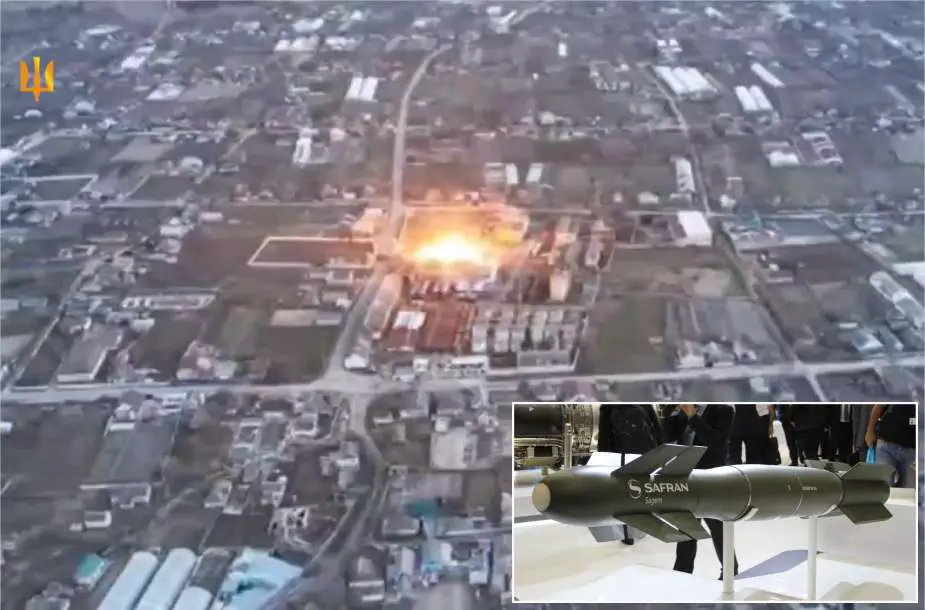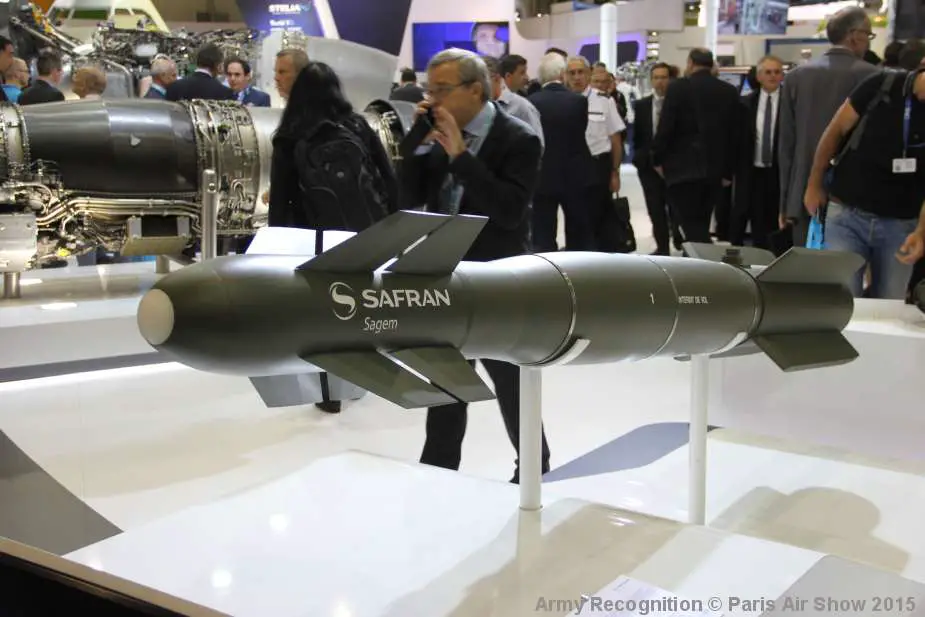On March 4, 2024, Lieutenant General Mykola Oleschuk, the Commander of the Air Force of the Armed Forces of Ukraine, disclosed through a video the utilization of the AASM-250 precision-guided munition, supplied by France, targeting a Russian Armed Forces facility within the Russia-occupied Kherson Oblast, Ukraine. This operation marked the initial use by the Ukrainian Air Force of such munitions in the context of the current conflict.
Follow Army Recognition on Google News at this link

France wants to supply the Ukrainian Air Force with nearly 600 AASM precision-guided munitions by the end of 2024. (Picture source: Telegram/Mykola Oleschuk and Army Recognition)
As reported by Army Recognition on January 19, 2024, the provision of these munitions was confirmed by French Defense Minister Sébastien Lecornu. During a press conference, he announced France's decision to supply Ukraine with SCALP-EG missiles and AASM (Air-to-Ground Modular Weapon) guided bombs, including an initial batch of 40 SCALP-EG cruise missiles and subsequent deliveries of AASM bombs. It was stated that the first consignment of 50 AASM bombs would be dispatched to Ukraine in January, with the intention of continuous monthly shipments throughout the year. This aid aligns with President Emmanuel Macron's earlier commitments and is intended to supply the Ukrainian Air Force with nearly 600 of these munitions by the year's end.
The AASM munitions, also known as HAMMER (Highly Agile Modular Munition Extended Range), will enhance certain capabilities of the Ukrainian Air Force, such as long-range striking and targeting precision. However, integrating these Western-manufactured munitions presents various challenges due to compatibility issues with the predominantly Soviet or Russian-origin aircraft currently operated by Ukraine. Addressing this may require modifications to the existing fleet or the acquisition of new aircraft compatible with these munitions. Additionally, comprehensive training is necessary for both pilots and ground personnel to ensure proper operation and integration of these weapons into current systems.
Strategically, the implementation of AASM munitions within the Ukrainian context needs to consider the advanced Russian anti-aircraft defenses, which can intercept such guided bombs. Therefore, despite their designed precision and range, their effectiveness is not guaranteed against an adversary equipped with sophisticated countermeasures. The deployment of these munitions also increases the risk to Ukrainian aircraft, which are limited in number.

The typical configuration of the AASM includes a 250-kilogram bomb fitted with a hybrid guidance system that combines an inertial navigation system (INS) and a Global Positioning System (GPS). (Picture source: Army Recognition)
The Armement Air-Sol Modulaire (AASM) is a precision-guided munition series developed by the French company Sagem, a subsidiary of the Safran group. Designed to meet a variety of operational needs, the AASM features a modular design that allows for the integration of different guidance units and bomb sizes. This design facilitates its use in missions requiring strikes beyond 50 kilometers and enables it to be launched off-axis from the target. The typical configuration of the AASM incorporates a 250-kilogram bomb fitted with a hybrid guidance system that combines an inertial navigation system (INS) and a Global Positioning System (GPS), aiming to accommodate diverse mission requirements.
Within this series, the AASM-250 variant is distinguished by its inclusion of a solid rocket motor, which extends its range to over 70 kilometers. This variant has a total weight of 340 kilograms and a length of 3.1 meters, and it is designed to carry a 250-kilogram warhead compatible with several bomb types, such as Mk82, BLU 111, and CBEMS/BANG. The guidance system of the AASM-250 is versatile, offering an all-weather capability through a combination of INS and GPS technologies, and it can be augmented with infrared homing or Semi-Active Laser Homing (SALH) for enhanced precision. The accuracy of the system varies, with the decametric version achieving a Circular Error Probable (CEP) of 10 meters, and the metric version achieving a CEP of 1 meter.
The development of the AASM has evolved from an initial 125 kg version, based on the American-designed Mk 82 bomb and first tested in 2009 to a larger 1,000 kg model that completed testing in early 2023. These developments have been part of a broader effort to adapt the munition to changing operational requirements. The guidance systems within the AASM range have specific designations, including SBU-38 for the INS/GPS version, SBU-54 for the INS/GPS/IIR (infrared imaging) version, and SBU-64 for the INS/GPS/SALH version. Since its introduction in 2007, the AASM has been utilized by the French Air Force and Naval Aviation, demonstrating its operational utility with various aircraft types, such as the Rafale, Mirage 2000, and Mirage F1.
















